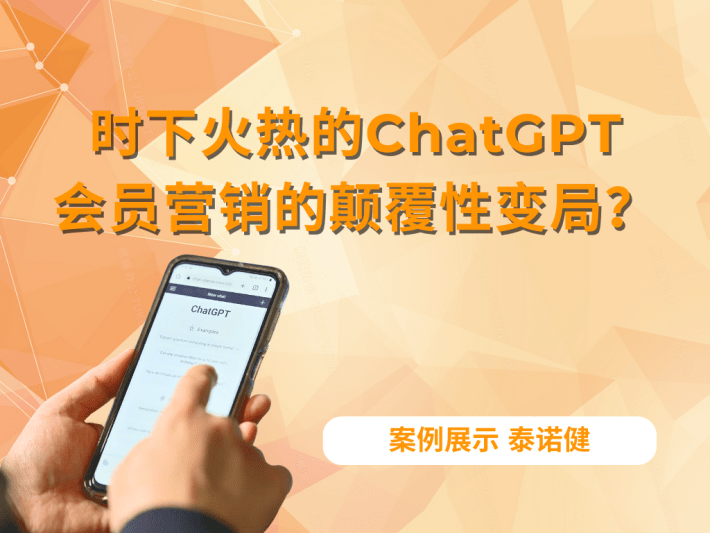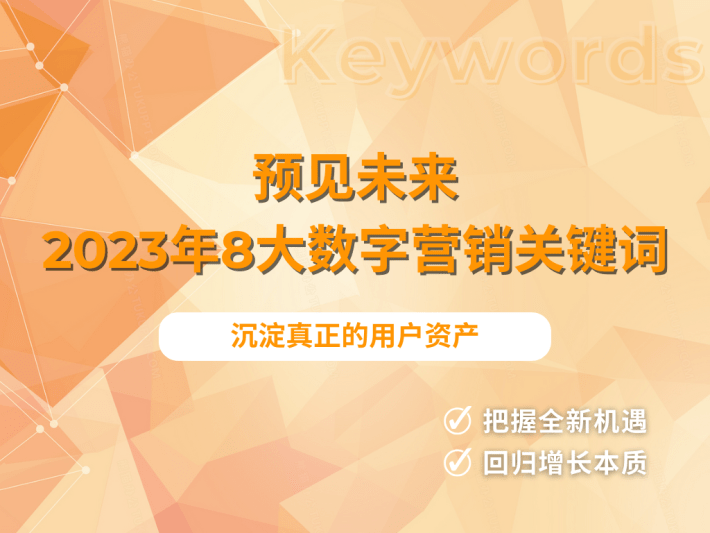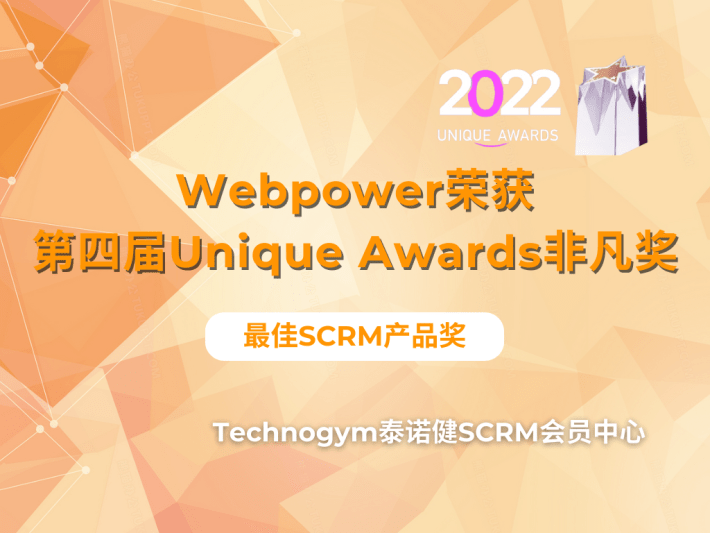Is private domain operation just traffic? No, it's an ecosystem!
Private domain operation is no longer confined to small-scale layouts within WeChat. It involves creating a comprehensive brand-owned private domain ecosystem that integrates online and offline, and public domains.
--Webpower
Nowadays, as the proportion of private domain revenue approaches 30% of the entire retail market, reaching a scale of 4 trillion yuan, leading players like Baidu, Alibaba, and Tencent are accelerating their layouts. Private domain operation is no longer a single business model or operational method, but is gradually forming a sustainable industry ecosystem.
What is a private domain ecosystem? Webpower believes that the definition of "ecosystem" in the business field can be summarized as a business model or state that is closely linked with its surrounding environment and entities. Private domain traffic itself is just a concept, but after several years of development, it has gradually evolved into a complete, scalable, and systematic ecosystem.
The private domain ecosystem is not limited to WeChat When it comes to the private domain ecosystem, WeChat is the first thing that comes to mind. As a social media giant in China, WeChat itself is a mini-ecosystem that integrates public platforms, merchant platforms, open platforms, and advertising platforms. It provides comprehensive services including traffic, marketing, interaction, sales, and viral growth, offering a natural environment for the development of the private domain ecosystem. Therefore, over the past two years, people often equated the private domain with WeChat.
And now, with the emergence of numerous private domain operation tools and surrounding service providers, private domain operation is no longer confined to the small-scale layouts within WeChat. Instead, it centers around the brand itself, building a private domain operation system that integrates online and offline, and public domains. I call it the brand-owned private domain ecosystem. How to build a brand-owned private domain ecosystem? Webpower has summarized the methodology of "Four Grabs, Four Not Let Go" for reference:
1. While developing the private domain, do not neglect the public domain.
Many partners, after tasting success in private domain operations, fall into the misconception that public domain platform traffic is too expensive and not worth the effort. Over the past few years, many brands, both big and small, have primarily focused on creating IP personas, then operating personal accounts, forming groups, and subsequently driving these users to make repeat purchases and spread the word. This approach is the basic gameplay of current private domain operations and while not incorrect, it essentially follows the logic of micro-businesses and represents just the outer shell of private domain operation.
Webpower has previously stated that private domain operation is not confined to the WeChat ecosystem, and therefore, it is not limited to micro-businesses either. Brands that truly succeed in breaking through with private domain operations all have a global perspective and continue to place significant importance on public domain operations.
Take Perfect Diary as an example. Many people believe that its core success factor is the persona "Xiao Wan Zi." However, they are unaware that while operating through "Xiao Wan Zi," the brand invested substantial effort and money continuously creating content exposure on public domain platforms like Xiaohongshu (Little Red Book).

Enhancing peripheral visibility and then building a massive pool of public domain traffic creates a multi-layered traffic funnel. This large amount of public domain traffic continuously replenishes the private domain, significantly alleviating the pressure caused by user acquisition and churn.
Therefore, public domain traffic represents the largest and broadest traffic pool for a brand. Neglecting marketing on public domain platforms is equivalent to reducing the brand's scale and its ability to replenish the private domain.
2. While operating in the full domain, do not abandon the pure private domain.
Earlier, we discussed not abandoning the public domain, and now we've introduced the concepts of the full domain and pure private domain. While the full domain, encompassing both public and private domains, may be easy to understand, what exactly is pure private domain?
Firstly, Webpower believes that the concept of a private domain is often relative. For example, Taobao in relation to WeChat is definitely a public domain. However, Taobao groups represent a relatively private domain traffic pool.
This leads us to a point of confusion: what truly qualifies as a pure private domain?
Actually, if we go back to the definition of private domain traffic itself, it refers to traffic that does not rely on a platform, can be directly reached, and can be repeatedly engaged. The key point here is "not relying on a platform."
Therefore, strictly speaking, neither Taobao groups nor WeChat groups can be considered pure private domain traffic. Looking across the landscape, the only place in China that can truly be called a pure private domain is a brand's own app!
Building a pure private domain aims to minimize the various uncertainties and risks associated with platforms, ensuring that the hard-earned members don't become unreachable.
But does this mean that relatively private platforms should be ignored? The answer is no, because building a pure private domain requires significant R&D and operational investments.
Take Pagoda as an example. It launched its app back in 2016, and both its ERP and POS systems are self-developed. By early 2020, the system had been adjusted over 60 times. As a result, Pagoda maintains a 700-member technical team, accounting for one-fourth of the company's total workforce! Such an investment is not something every brand can afford.

At the same time, Pagoda has not abandoned relatively private domains after establishing its pure private domain. It also manages 1,500 community groups and boasts over 19 million private domain users based on the WeChat ecosystem! Therefore, while pure private domains are indeed important, the WeChat ecosystem remains a crucial venue for accumulating private domain traffic. For managerial convenience, funneling private domain traffic into mini-programs and Enterprise WeChat is a good strategy.
3. Focus on online operations without neglecting offline presence: "Will online private domains cannibalize offline store traffic?"
This is a question Webpower frequently encounters and is also a reason many brands struggle to advance their online operations.
Webpower has said before that private domain operation should be done as an ecology, and this ecology, not only includes online, but also offline.A healthy ecosystem can create a mutually beneficial growth loop between online and offline channels, rather than siphoning traffic from one area to the other.
Take Watsons as an example: on one hand, in-store customers are encouraged to add the store adviser on Enterprise WeChat (WeCom). Through promotions and benefits, these customers are guided to place orders via the cloud store or mini-program. Quality customers are then invited to benefit groups via the store adviser's WeCom, accomplishing the transition from offline to online traffic and segmented user operations. On the other hand, immersive services like SPA and hand care are used to attract online users back to physical stores, achieving a win-win scenario for both online and offline platforms.
Leveraging this interactive traffic funnel, Watsons has accumulated over 3 million private domain users. On Women's Day in 2020 alone, their Gross Merchandise Value (GMV) surpassed 10 million yuan in a single day!
4. Focus on traffic without neglecting the accumulation of brand assets.
The essence of private domain is high-quality traffic operations, but while managing traffic, brand building should not be neglected.
Take Chow Tai Fook as an example. As a well-known jewelry brand, Chow Tai Fook began its private domain strategy several years ago. In early 2020, their WeChat-based mini-program "Yunshang 365" was launched as a private domain marketing tool and quickly attracted over 3.7 million customer registrations!
Therefore, it is evident that for big brands, building a private domain is much easier than it is for ordinary brands. After all, a brand itself is the largest private domain traffic. Even if all technological means and platforms were to disappear one day, fans with brand loyalty would remain connected. A brand acts like a magnet, firmly attracting users. Wherever the brand goes, the users follow.
Therefore, when building a private domain, one must also focus on building the brand. Brand influence determines the starting point, scale, and operational complexity of private domain management.
Reminder: There is no such thing as free traffic in this world. Many people believe that private domain traffic is free, but Webpower believes: There is no free lunch when it comes to traffic. If you think it's free, you are definitely paying the cost somewhere else.
Firstly, aside from the costs incurred in building your team, the expenses for acquiring private domain traffic through public domain marketing are also a form of cost.
Secondly, the maintenance of private domain traffic also incurs various costs, albeit to different extents. Therefore, the notion of "free private domain traffic" is more of a myth. To build a successful private domain, proper budgeting is essential.
In conclusion: Over time, private domain strategies undergo constant transformation and iteration. For brands to avoid pitfalls, there is no shortcut other than continuous thinking and validation. In the rapidly changing business environment, understanding how to leverage marketing strength to break through the noise is crucial. Follow Webpower as we explore these topics together with you.
We are Webpower
An attitude-driven digital marketing company

Webpower Rights Statement
Webpower China Region All Rights Reserved. Reproduction must include the source.



